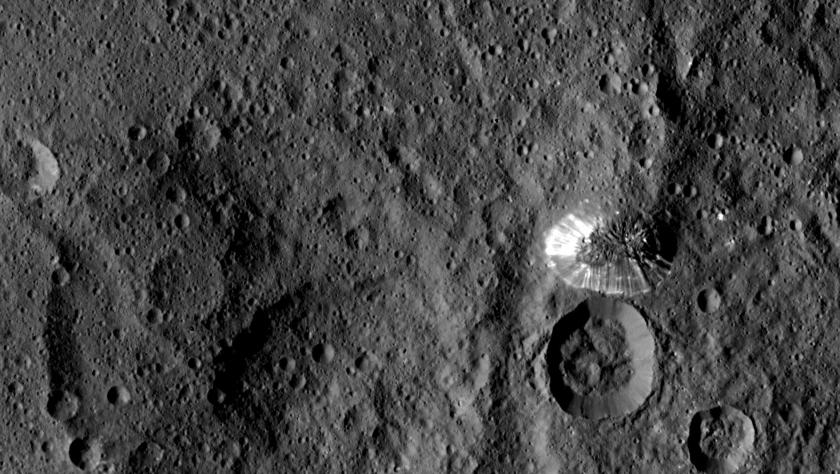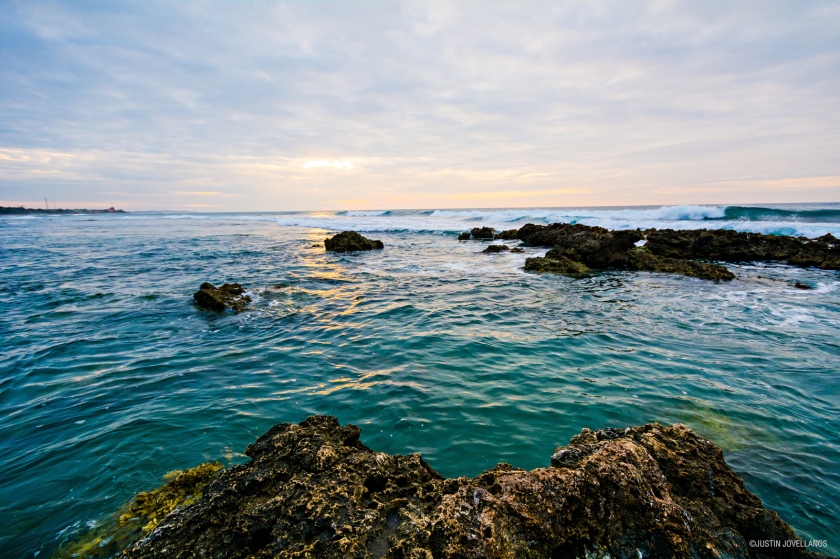 Ahuna Mons on the surface of Ceres. Credit: NASA
Ahuna Mons on the surface of Ceres. Credit: NASA
I’m terrified of volcanoes. They possess such almighty power and are completely capable of devastating human lives and their livelihood. With fiery spurts of lava, they wreck destruction on anything in its path. A few frightening examples include Mount Vesuvius’s destruction of Pompeii, Mount St Helens’ 1980 eruption and Mount Merapi’s constant eruptions in Indonesia.
Yes, they are awe-inspiring and some people like to get close and personal with them but I chose to live an existence of being located very far away from them. Isn’t Australia wonderful with its dormant and extinct volcanoes? A good volcano is a non-active one I say.
But really, not all volcanoes spurt out molten rock or have done so in the past. Some volcanoes could actually be ice volcanoes, otherwise known as cryovolcanoes. Instead of erupting with lava, cryovolcanoes eject cryomagma, a cool cocktail of water and gases.
Cool, so where are these ice volcanoes?
Cryovolcanoes don’t occur on Earth, but in outer space which makes sight-seeing a little difficult even if you’re an astronaut (I’ve handed in my resume and I expect to see a reply soon, NASA).
Astronomers theorise that cryovolcanoes could be found on cold celestial objects like Pluto and the moons orbiting Jupiter and Saturn. Of course, another requirement for cyrovolcanoes is the presence of water on that celestial body but this is proving less and less rare in space.
The latest discovery on a dwarf planet called Ceres has provided cold hard evidence for cryovolcanoes. Dawn, a space probe, has been tasked with monitoring Ceres and in 2015, the spacecraft discovered a bright shining mountain on the surface of the planet. In a recent paper published in Science, this mountain, Ahuna Mons, has now been proposed as a cryovolcano.
How do they work?
Cryovolcanoes work much in the same way our regular Earth volcanoes do where geothermal energy warms up magma. For cyrovolcanoes, tidal energy provides the heat that warms cryomagma and causes it to turn into a vapour that moves up the mountain. When cryomagma is expelled on the surface, it condenses into ice.
Ceres is an interesting case though. Ceres is located far enough away from giant celestial bodies that it experiences negligible tidal energy. So where does it get the energy to heat up cryomagma? Turns out that Ceres could still have some internal heat left over from its formation and this fuels the cryovolcanoes. Additionally, Ahuna Mons is a baby in geological time scales and the ice that we see surrounding it could have only lasted only about century. This all hints to Ceres being still geologically active.
Volcanism and the formation of planets
The scientific objective of the Dawn spacecraft is to curate geological information to help answer one of the universes’ big questions – how did our Solar System and its planets form?
Volcanic activity is important in shaping the surface of our planets. On rocky celestial bodies like Mercury, volcanic activity could help us understand how these planets came to be. Now with the help of Dawn, the evidence for volcanic activity is mounting for ice bodies too.
Ahuna Mons is one chill volcano I wouldn’t mind checking out. Hey NASA, I’m still waiting on that invitation.
If you liked reading about ice volcanoes, here are some additional links:
Ice volcano on Pluto: http://www.nasa.gov/feature/possible-ice-volcano-on-pluto-has-the-wright-stuff
Ceres and Ice Volcanoes: http://www.seeker.com/ceres-mystery-bright-dots-may-have-volcanic-origin-1769548974.html
Science magazine’s coverage: http://www.sciencemag.org/news/2016/09/ice-volcano-spotted-ceres-asteroid-belt-s-dwarf-planet
Author’s own work. This post was originally published on http://blogs.unimelb.edu.au/sciencecommunication/2016/09/18/ice-ice-baby-volcano/





